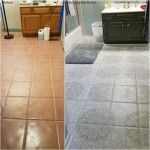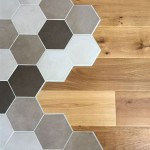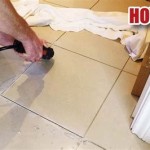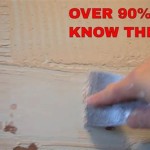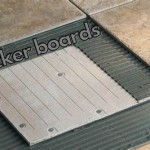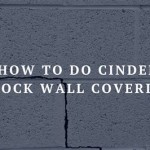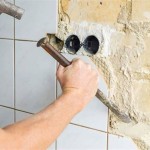Do I Need Cement Board Under Bathroom Tile Walls?
The question of whether to install cement board under bathroom tile walls is a critical consideration for any bathroom renovation project. While it may seem like an additional expense and labor investment, the decision ultimately impacts the longevity, structural integrity, and overall performance of the tiled surface. This article will explore the properties of cement board, compare it with alternative backer boards, and outline the specific circumstances under which its use is highly recommended to ensure a durable and water-resistant bathroom wall.
The fundamental role of a backer board in a tiled environment is to provide a stable, moisture-resistant substrate onto which tiles can be adhered. Traditional materials such as drywall, while suitable for general wall construction in dry areas, are not designed to withstand the constant exposure to moisture and humidity prevalent in bathrooms. Using an inappropriate backer board can lead to a host of problems, including mold growth, tile cracking, and structural damage to the wall itself.
Cement board, also known as cement backer board, is a composite material made from cement, reinforced with fiberglass mesh. This construction gives it exceptional strength and water resistance, making it an ideal substrate for tiling in wet environments. Its primary purpose is to create a flat, rigid, and durable surface that will not degrade under prolonged exposure to moisture. Cement board is available in various thicknesses and sizes, allowing for customization based on the specific requirements of the project.
Understanding the Properties of Cement Board
Cement board distinguishes itself from other backer board options through its unique set of properties. Its primary advantage lies in its superior moisture resistance. Unlike gypsum-based backer boards, cement board does not readily absorb water. This inherent resistance prevents the board from swelling, warping, or deteriorating when exposed to humidity or direct water contact. This is crucial in a bathroom setting where water exposure is inevitable.
Furthermore, cement board offers exceptional dimensional stability. This means it is less likely to expand or contract with changes in temperature and humidity. This stability is essential for maintaining the integrity of the tile installation, as excessive movement in the substrate can cause tiles to crack or become dislodged over time. The rigid nature of cement board also provides a solid foundation for the tiles, minimizing the risk of flexing or movement that could compromise the grout lines.
Another key advantage of cement board is its resistance to mold and mildew growth. Because it does not contain organic materials that can serve as a food source for mold, it significantly reduces the risk of microbial growth behind the tile. This is particularly important in bathrooms, where high humidity levels can create a breeding ground for mold. By inhibiting mold growth, cement board contributes to a healthier indoor environment and extends the lifespan of the wall assembly.
In addition to its resistance to moisture and mold, cement board is also highly durable and impact-resistant. This robustness makes it less susceptible to damage during installation and everyday use. It can withstand minor impacts without cracking or crumbling, ensuring that the tiled surface remains intact for years to come. This durability is particularly beneficial in high-traffic areas, such as shower walls and around bathtubs.
Finally, cement board provides a good bonding surface for tile adhesives. The textured surface of the board allows the thin-set mortar to establish a strong and lasting bond. This ensures that the tiles are securely adhered to the substrate, preventing them from loosening or falling off over time. The compatibility of cement board with various types of tile adhesives makes it a versatile option for a wide range of tiling projects.
Comparing Cement Board with Alternative Backer Boards
While cement board is a popular choice for bathroom walls, other backer board options are available, each with its own strengths and weaknesses. Understanding the differences between these materials is crucial for making an informed decision about which one is best suited for a specific project.
One common alternative to cement board is gypsum-based water-resistant drywall, often referred to as "green board" or "blue board." This type of drywall has a moisture-resistant coating that provides some degree of protection against water damage. However, it is not completely waterproof and is not recommended for areas that are directly exposed to water, such as shower walls. While it may be suitable for walls that are less prone to moisture exposure, such as those around a sink or toilet, it is generally considered inferior to cement board in terms of overall water resistance and durability.
Another alternative is fiber-cement board, which is similar to cement board but contains a higher proportion of cellulose fibers. While fiber-cement board is also moisture-resistant, it tends to be less rigid and more prone to cracking than cement board. It may also be more susceptible to shrinking and swelling with changes in humidity, which can compromise the tile installation. For these reasons, cement board is often preferred over fiber-cement board for bathroom wall applications.
Foam backer boards represent another class of alternatives. These boards are typically made from extruded polystyrene or expanded polystyrene and are covered with a waterproof coating. Foam backer boards are lightweight, easy to cut, and provide excellent insulation. They are completely waterproof and resistant to mold growth. However, they tend to be more expensive than cement board and may not provide the same level of rigidity. Additionally, the type of fastener required to secure the boards can be more specialized.
When comparing these options, it is important to consider the specific requirements of the project, the level of moisture exposure, and the budget. While alternative backer boards may be suitable for certain applications, cement board is generally regarded as the most reliable and durable option for bathroom tile walls.
Situations Where Cement Board is Essential
While using cement board under bathroom tile walls is generally a good practice, there are certain situations where it is absolutely essential. These situations typically involve high levels of moisture exposure or the need for exceptional structural support.
One of the most critical applications for cement board is in shower walls and floors. These areas are directly exposed to water on a regular basis, making them highly susceptible to moisture damage. Using an inappropriate backer board in a shower can lead to significant problems, including mold growth, structural damage, and costly repairs. Cement board provides the necessary water resistance and durability to withstand the constant exposure to water in a shower environment. Furthermore, all seams and screw penetrations should be properly sealed with a waterproof membrane to ensure complete protection.
Another situation where cement board is essential is around bathtubs. Even if the bathtub is not used for showering, the surrounding walls are still exposed to splashing and high humidity levels. Using cement board in this area will help to prevent water damage and ensure the longevity of the tile installation. Similarly, cement board is recommended for walls behind sinks, where frequent splashing is likely to occur.
In addition to areas with high moisture exposure, cement board is also recommended for walls that require extra structural support. For example, if the wall is supporting heavy tiles, such as natural stone or large-format tiles, cement board will provide a more rigid and stable substrate. This is especially important for walls that are not perfectly plumb or have slight imperfections. The added strength of cement board will help to distribute the weight of the tiles evenly and prevent cracking or dislodging.
Furthermore, if the bathroom is located in a high-humidity environment, such as a coastal area or a basement, cement board is strongly recommended. In these environments, the air is constantly saturated with moisture, which can penetrate even seemingly waterproof materials. Cement board will provide an extra layer of protection against moisture damage and help to maintain a healthy and comfortable indoor environment.
Finally, consider the long-term cost of the project. While cement board may be more expensive upfront than some alternative backer board options, it can save money in the long run by preventing costly repairs and replacements. Investing in cement board from the outset can help to ensure that the tiled surface remains intact and functional for many years to come.
In conclusion, cement board is a crucial component of a successful bathroom tile installation. Its superior moisture resistance, dimensional stability, and durability make it the ideal substrate for walls that are exposed to high levels of humidity or direct water contact. While alternative backer board options may be suitable for certain applications, cement board is generally the best choice for shower walls, bathtub surrounds, and other areas where water damage is a concern. By using cement board, homeowners can ensure that their bathroom tile walls remain beautiful, functional, and long-lasting.

Installing Cement Board In The Bathroom

Installing Cement Board In The Bathroom
Drywall And Cement Board For The Downstairs Bathroom Blog Homeandawaywithlisa
Drywall And Cement Board For The Downstairs Bathroom Blog Homeandawaywithlisa

How To Install Cement Board On A Floor Diy Family Handyman

How To Install Cement Board For Tile Bower Power

Installing Cement Board In The Bathroom

How To Install Cement Board For Tile Projects Diy Family Handyman

Cement Backer Board For Shower A Pro Busts All The Myths

Drywall Can Cement Board Extend Beyond The Tiled Area On Bathroom Walls Home Improvement Stack Exchange
Related Posts

